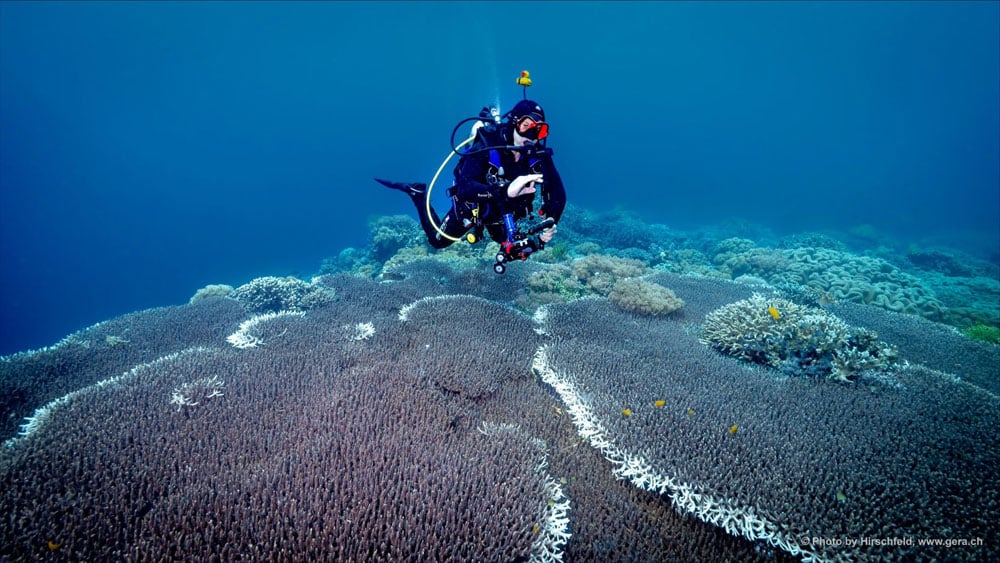A Quick Guide to Scuba Diving in the Philippines
The Philippines is a top scuba diving destination. Its diverse marine life and stunning underwater landscapes make it a paradise for divers. The country’s 7,000 islands offer clear waters, vibrant coral reefs, and a wealth of marine species. From majestic whale sharks, thresher sharks, and sea turtles to tiny seahorses and a million migrating sardines, the underwater world here is teeming with life.
But it’s not just about the marine life that entices divers. The Philippines also boasts dramatic drop-offs, caves, and historic shipwrecks as dive sites. So whether you’re a beginner or an experienced diver, there’s something to explore and enjoy while scuba diving in the Philippines.
Read on to learn more about scuba diving in the Philippines.
The marine life of the Philippines
The Philippines is home to diverse marine life and stunning coral reefs that captivate divers and nature enthusiasts alike. Some of the country’s iconic species include sea turtles, whale sharks, and colorful reef fish.
- Sea turtles: The Philippines is a sanctuary for sea turtles, including the critically endangered hawksbill turtle and the green sea turtle you can find in the Tubbataha Reef, Palawan, Moalboal, and other diving sites in the country. These graceful creatures are a common sight and play a crucial role in maintaining the health of coral reefs by controlling sponge populations.
- Whale sharks: The Philippines is one of the best places in the world to encounter whale sharks, the largest fish on the planet. These gentle giants can be found in various regions, offering tourists a once-in-a-lifetime opportunity to swim alongside these magnificent creatures. You can spot the whale sharks in Donsol in Luzon, Oslob in Cebu, and Tubbataha Reefs Natural Park in the Sulu Sea.
- Colorful reef fish: The vibrant colors of the Philippines’ coral reefs are home to a dazzling array of reef fish. From clownfish and parrotfish to angelfish and butterflyfish, these marine species contribute to the kaleidoscope of colors that make the underwater world so visually striking.
Coral reefs and conservation in the Philippines
The Philippines is situated within the Coral Triangle, which is considered the global center of marine biodiversity. Its coral reefs are essential not only for the country but also for the world. Coral reefs serve as nurseries for many fish species, protect coastlines from erosion, and contribute to the livelihoods of countless communities through tourism and fisheries.
Despite their ecological and economic importance, coral reefs in the Philippines, like elsewhere, face various threats, including climate change, overfishing, and pollution. Conservation efforts are critical to preserving these ecosystems. Marine protected areas, like Tubbataha Reefs Natural Park and Apo Reef Natural Park, are set up to safeguard these fragile environments.
Through these protected areas and initiatives to combat illegal fishing, coral restoration, and community-based conservation, the Philippines is working to ensure that future generations can continue to marvel at the vibrant marine life that thrives in its waters. Tourists and divers can also play a part by practicing responsible and sustainable diving and snorkeling, which helps reduce the impact on these fragile ecosystems.
Philippines scuba diving: best diving spots
Below are some of the best scuba diving spots in the Philippines.
Anilao, Batangas
Anilao, a hidden gem for divers, boasts stunning coral reefs. Its underwater beauty is a haven for macro photography enthusiasts. You will find colorful nudibranchs, seahorses, and various critters as you dive into its crystal-clear waters. Anilao is also famous for its “muck diving” sites, where you can spot rare and unusual marine species. Notable wrecks like the “Cathedral” add to the appeal of this destination, offering a mix of natural beauty and intriguing history.
Tubbataha Reefs Natural Park, Sulu
Tubbataha Reefs Natural Park is a UNESCO World Heritage Site located in the middle of the Sulu Sea. The remote marine sanctuary is home to a staggering diversity of marine life. Its coral walls and drop-offs are adorned with vibrant corals, and you can expect to encounter schools of fish, sharks, and turtles. The protected status of Tubbataha ensures that the underwater world here remains virtually untouched, offering a unique and unforgettable diving experience.
Apo Reef Natural Park, Mindoro
Apo Reef Natural Park is the world’s second-largest contiguous coral reef system, making it a must-visit for divers. This remote paradise in the Mindoro Strait is renowned for its exceptional drift diving. As you glide along the currents, you’ll come across pelagic species like sharks and rays. The possibility of shark encounters is a highlight of Apo Reef, where you might spot hammerhead and white-tip reef sharks patrolling the waters.
Malapascua Island, Cebu
Malapascua Island, located in Cebu, is famous for its thresher shark sightings. Divers from around the world explore the Monad Shoal, a cleaning station for these elusive creatures. Watching thresher sharks up close is a surreal and unforgettable experience. Additionally, Malapascua offers other unique dive sites, including Gato Island, known for its underwater tunnels and coral formations, and Kemod Shoal, where you can spot manta rays.
Coron, Palawan
Coron, Palawan, is a wreck diver’s paradise. The waters here hold the remnants of Japanese shipwrecks from World War II, adding an eerie beauty to underwater exploration. These wrecks are now teeming with marine life, making them not only historically significant but also fantastic habitats for fish, corals, and other marine creatures. The juxtaposition of history and natural wonder makes Coron a unique scuba diving destination.
Puerto Galera, Mindoro
Puerto Galera offers a wide variety of dive sites to suit divers of all levels. From stunning coral gardens to intriguing caves and walls, there’s something for everyone. The region is mainly known for “muck diving,” where you can search for fascinating critters like seahorses, nudibranchs, and frogfish. Underwater photographers will appreciate the ample opportunities to capture the beauty of Puerto Galera’s marine life.
To know more information about the dive sites in Dauin and Malapascua, click the links below:
When is the best time to go scuba diving in the Philippines?
Choosing the right time to go scuba diving in the Philippines can give you a safe and enjoyable experience. The country’s tropical climate means that some periods of the year are more favorable than others.
Best times for diving in the Philippines:
1. Dry season (December to May):
-
- The dry season is the most popular time for scuba diving in the Philippines.
- From December to May, you can expect calm seas, clear skies, and excellent underwater visibility.
- Water temperatures are comfortably warm, ranging from 27°C to 30°C (80°F to 86°F).
- This period is ideal for exploring popular dive sites, such as Tubbataha Reefs, Apo Reef, and Malapascua Island.
2. Whale shark season (February to May):
-
- If you’re eager to encounter whale sharks, plan your trip between February and May.
- During these months, these gentle giants are more likely to be spotted, especially in Oslob, Cebu.
3. Rainy season (June to November):
-
- The wet season typically runs from June to November.
- While this period experiences more rain and occasional storms, it can still be suitable for diving.
- Divers can enjoy fewer crowds and discounted rates on accommodations and dive packages.
- However, dive conditions can be more challenging due to reduced visibility and rougher seas.
Considerations for weather and water conditions:
- Typhoons: The Philippines is susceptible to typhoons, with the peak typhoon season usually occurring from July to October. Divers should exercise caution during these months and monitor weather forecasts. Many dive operators close during typhoons for safety reasons.
- Water visibility: While water visibility can be excellent during the dry season, it can vary by location and time of year. Research the specific sites you plan to visit and check the typical visibility conditions for that area.
- Local variations: Remember that weather and water conditions vary from region to region. For instance, destinations in the western part of the Philippines, such as Palawan, may have different weather patterns than those in the Visayas or Mindanao.
- Crowds and prices: The dry season, being the peak tourist season, can be crowded, and prices for accommodations and diving packages are often higher. The wet season may be a better choice if you prefer quieter dives and budget-friendly options.
Scuba diving Philippines: tips for a safe and memorable experience
If you’re planning to explore the underwater wonders of the Philippines through scuba diving, here are some essential tips to ensure an unforgettable and safe experience:
- Choose reputable dive operators: Select dive centers and operators with certified instructors and good reviews, such as Sea Explorers Philippines. A reputable diving operator in the Philippines will prioritize safety and the environment.
- PADI certification: Before your trip, consider getting your PADI (Professional Association of Diving Instructors) certification. It is internationally recognized and ensures you’re well-prepared for diving in different locations.
- Pack wisely: Bring appropriate swimwear, a rash guard, and, if needed, a wetsuit or drysuit. Your dive center can advise you on the specific gear required for your chosen dive sites.
- Respect marine life: Avoid touching or disturbing marine life and coral reefs. Adhere to responsible diving practices and minimize your impact on the underwater environment.
- Safety awareness: Familiarize yourself with emergency procedures, such as buddy checks and safe ascents. Stay hydrated between dives.
- Choose the right season: Opt for the dry season (December to May) for the best diving conditions, but constantly monitor local weather conditions and potential typhoon alerts.
- Stay informed: Research the specific dive sites you plan to visit. Understand their conditions, depths, and marine life so you can plan your dives accordingly.
Helpful resources when diving in the Philippines
Here are some helpful links and resources for planning a scuba diving trip in the Philippines:
- PADI Dive Shop Locator: PADI’s official dive shop locator to find PADI-certified dive centers and instructors in the Philippines.
- Dive Philippines: The official website of the Philippine Commission on Sports SCUBA Diving.
- Diving – Philippine Department of Tourism: The official website of the Philippine Department of Tourism that includes diving information in the country.
- Bureau of Immigration, Philippines: For visa-related information and entry requirements for travelers to the Philippines.
- Lonely Planet Philippines: The Lonely Planet guide for the Philippines offers insights into travel, attractions, and diving destinations.
- TripAdvisor Philippines: Check out TripAdvisor for reviews and recommendations on accommodations, dive centers, and attractions.
With this quick guide to scuba diving in the Philippines, you’re well-equipped to explore the country’s underwater wonders, from colorful coral reefs and iconic marine species to historic shipwrecks, ensuring your scuba diving adventure is both safe and unforgettable.




